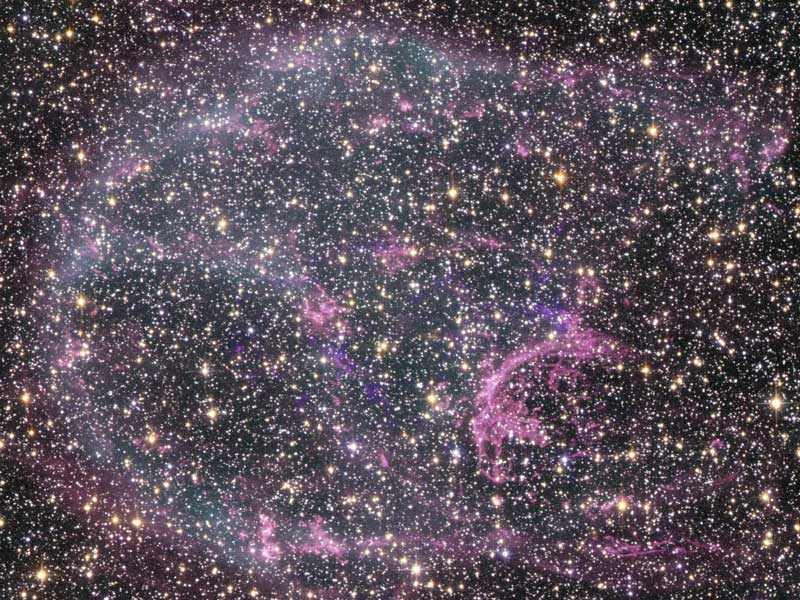 |
Астронет: Астрономическая картинка дня Остаток сверхновой N132D в видимом свете и рентгеновских лучах http://variable-stars.ru/db/msg/1208952/eng |
Credit & Copyright: NASA,
ESA, and
The Hubble Heritage Team
(STScI/AURA)
Acknowledgment: J.C. Green (Univ. of Colorado) and the Cosmic Origins Spectrograph (COS) GTO team; NASA/CXO/SAO
Explanation:
Thousands of years after a star exploded, its expanding remnant
still glows brightly across the spectrum.
Such is the case with
N132D, a
supernova remnant located in the neighboring
Large Magellanic Cloud (LMC) galaxy.
The expanding shell from this explosion now spans 80
light-years
and has swept up about 600 Suns worth of mass.
N132D was imaged recently in optical light and in great detail with the
Hubble Space Telescope.
The Hubble image was then combined with a position coincident detailed image in
X-ray light taken by the
Chandra X-ray Observatory.
The combination,
shown above
in representative colors, shows a nearly spherical expanding
shockwave
highlighted by pink emission from
hydrogen
gas and purple emission from
oxygen gas.
A dense field of unrelated stars also from the
LMC populates the image.
Studying the image gives an opportunity to study material
once hidden deep inside a star.
N132D spans about 150 light years and lies about 160,000
light years away toward the
constellation of
Dorado.
Acknowledgment: J.C. Green (Univ. of Colorado) and the Cosmic Origins Spectrograph (COS) GTO team; NASA/CXO/SAO
Authors & editors:
Robert Nemiroff
(MTU) &
Jerry Bonnell
(USRA)
NASA Web Site Statements, Warnings,
and Disclaimers
NASA Official: Jay Norris.
Specific
rights apply.
A service of:
LHEA at
NASA /
GSFC
& Michigan Tech. U.
